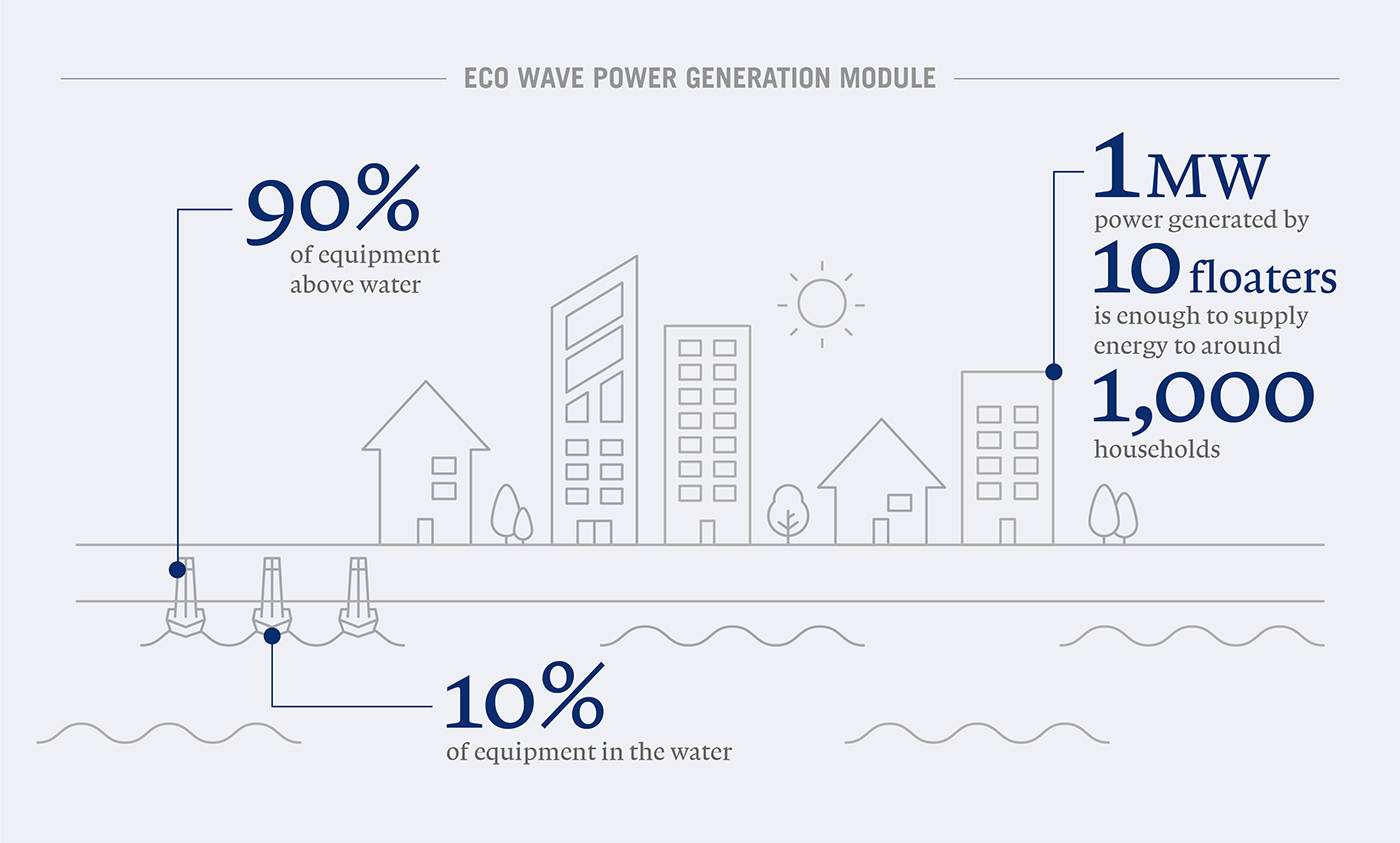23 May 2018
Harnessing the ocean’s awesome potential could double global electricity production at a stroke. Until now it has proved an elusive prospect, with heavy investment resulting in only slight returns. Now two remarkable entrepreneurs, armed with a revolutionary land-based power generation system, are vying to turn the tide once and for all.
Today there are more than a billion people, most of them in developing countries, living without electricity.
Those fortunate enough to have access to it often suffer the blight of air pollution from power plant emissions; and with ever increasing demand for electricity, the cost of imported fuels continues to rise.
Renewables are widely regarded as the answer to this dilemma, as the cost of wind and solar power falls towards that of more traditional energy sources.
Yet there is one source of hitherto untapped power, which the World Energy Council estimates could double global energy production: the ocean.
Technologies to generate electricity from tidal power, wave power and ocean thermal energy conversion remains at a very early stage of development. However, two entrepreneurs have developed a system, which is set to change all that.
It can generate power at night or in polluted atmospheres, unlike solar power, so it’s not expensive.”
Their company is Eco Wave Power, and its unique EWP wave energy device is outperforming competing systems, not least on cost.
“It’s a very simple system, with 90 per cent of the equipment on land and just 10 per cent in the water,” says Inna Braverman, the company’s co-founder.
“It requires no ships or divers and there’s easy access for maintenance, unlike competing technologies, which operate mainly offshore. And it can generate power at night or in polluted atmospheres, unlike solar power, so it’s not expensive.
“Our device will also benefit from economies of scale as its use grows, and will become cheaper than solar.”
Inna was born in Ukraine and graduated from university in Israel before starting work for a renewable energy company. She soon became interested in wave power generation: an area in which many companies were investing with little commercial success.
She met her Canadian co-founder, David Leb, at a party and the pair soon discovered a shared interest in wave energy.
While wave power will form just one part of the renewable “big picture”, along with solar, wind and biofuel-based electricity generation, it has huge potential for the likes of Australia, Scotland and Chile.”
A serial entrepreneur, David had been living in Panama, where he owned a surf camp on the Pacific coast. Watching the surfers reminded him on a daily basis of the ocean’s immense untapped power.
The two teamed up, undaunted by the wealthy competition. David provided angel funding, while Inna returned to Ukraine to research possible technologies. She launched a competition, which attracted 300 engineers to submit plans, then took the most promising idea to the Institute of Hydromechanics in Kiev for testing.
The groundbreaking technology is as simple as it is innovative, based on simple floaters attached to structures on the shore. These floaters rise and fall with the waves, creating hydraulic pressure that can be harnessed to turn motors and generate electricity. Smart automation controls the process to smooth power generation; if the waves become too rough, it can raise or lower the floaters to protect them from damage.
Each power generation module, made up of ten floaters, generates one megawatt (MW) of power – enough to supply around 1,000 households. The modules can be attached to any man-made structure, including jetties, piers and platforms as well as breakwaters.

Eco Wave Power has been running a wave energy plant off the coast of Israel for the past three years. More recently, in 2016, the company began work on an EWP system in Gibraltar, on a former Second World War ammunition jetty. “It will be enlarged to 5MW, in the first commercial wave energy array in Europe,” says David. “On completion, it will provide 15 per cent of Gibraltar’s electricity.”
A similar project, which will ultimately be five times bigger again, is about to begin construction in the Mexican port of Manzanillo. Meanwhile EWP is finalising an agreement with a Chinese nuclear company to collaborate on building 400MW of wave energy power stations in China, starting with a 50MW plant in Zhejiang Province.
Inna is particularly excited to be working in China for very personal reasons.
On completion, it will provide 15 per cent of Gibraltar’s electricity.”
“I was born near Chernobyl two weeks before the nuclear explosion there and was a sick baby like many children in the region,” she says. “Once, I stopped breathing, and had to be resuscitated by my mother, who was a nurse.
“Now I will be working in China, which is dependent on nuclear power, helping it to develop renewable energy.”
While wave power will form just one part of the renewable “big picture”, along with solar, wind and biofuel-based electricity generation, it has huge potential for the likes of Australia, Scotland and Chile.
With the company set to be launched on the Australian stock exchange this year, prospects are strong.
“Cities have been extracting resources from the oceans for centuries and polluting them by what they put into them,” says David. “Now we can extract something in the form of renewable energy, which doesn’t pollute them and can generate power endlessly.”






